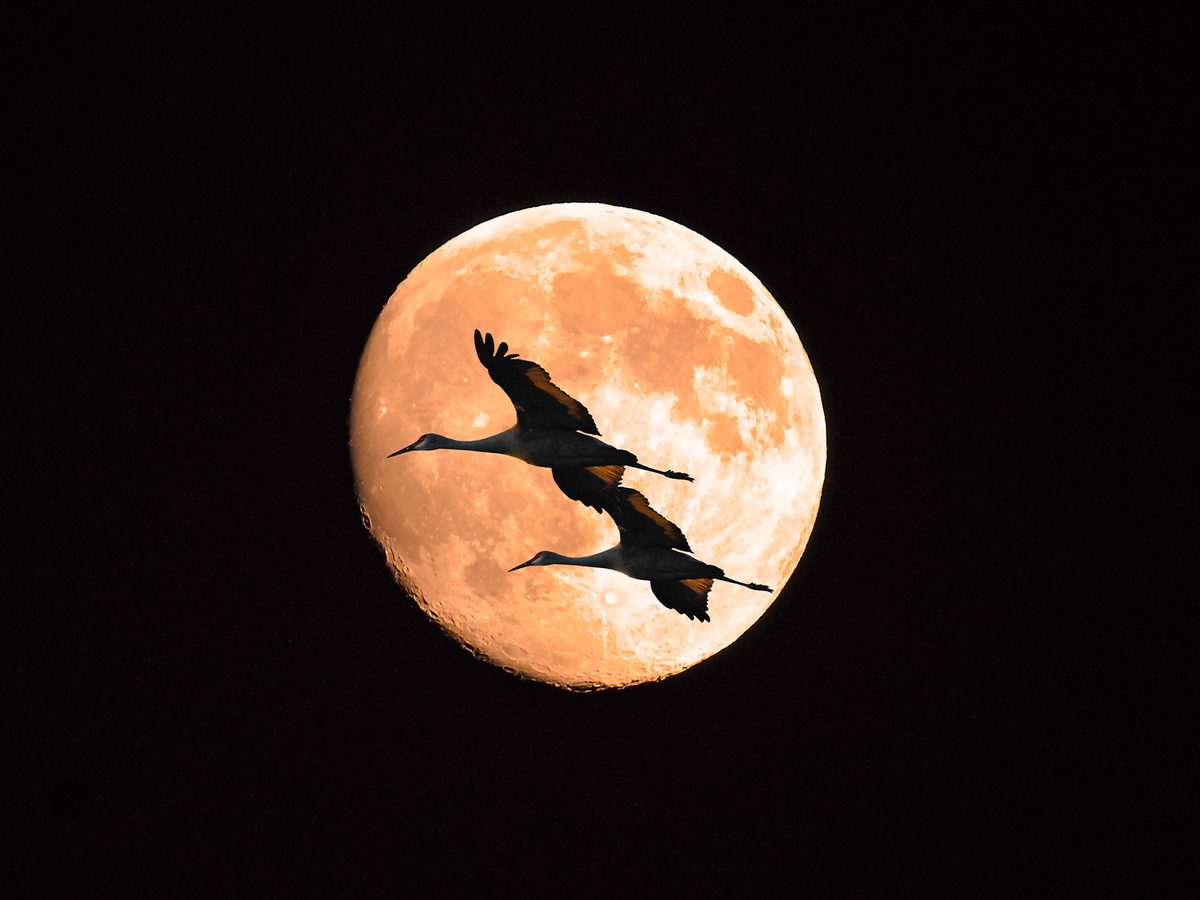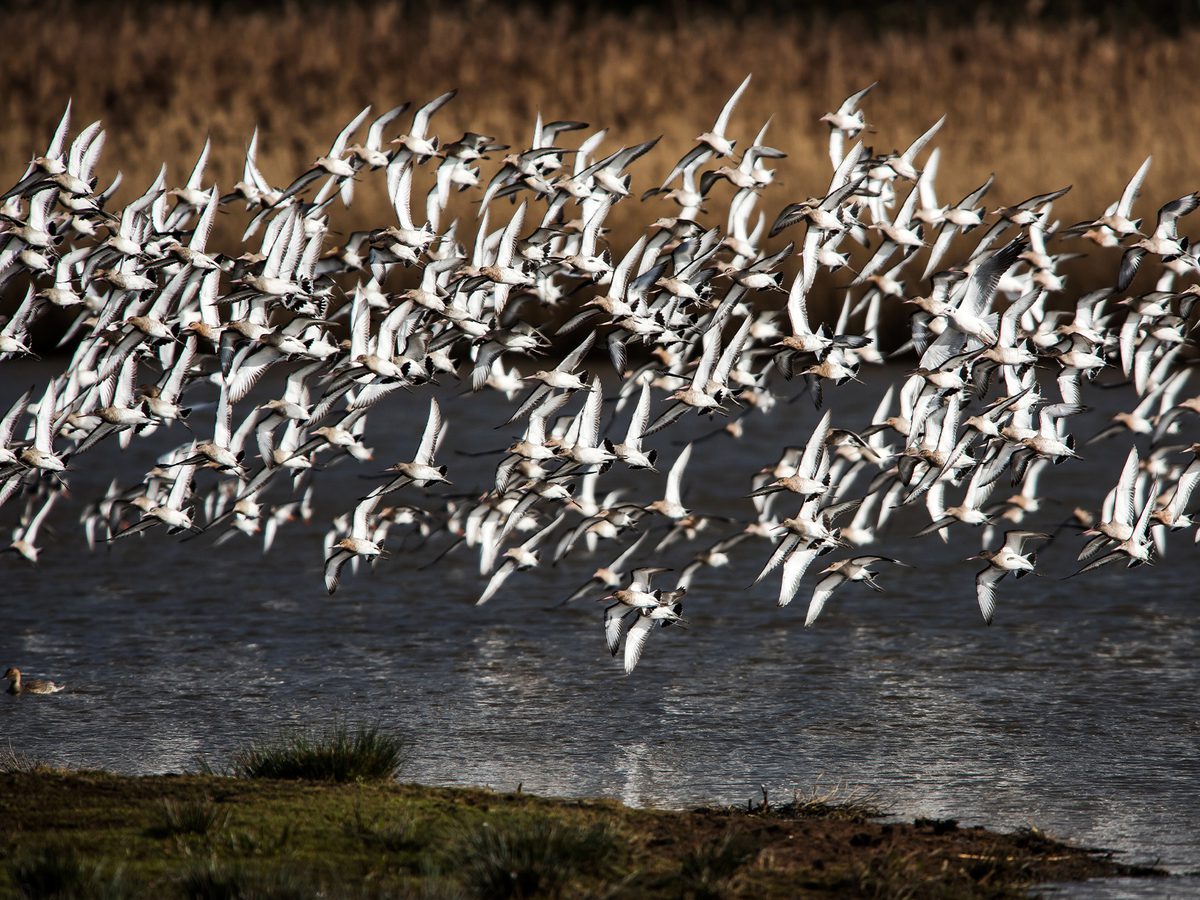Navigational Techniques

Navigational Marvels of the Avian World
Bird migration has captured our imagination throughout history, although a solid understanding of avian movements has remained elusive until relatively recently. Modern science and technology have allowed us to track migrating birds with greater accuracy, and today, we have a good picture of where and why they migrate. Still, one of the most enduring questions regards how birds navigate the Earth with such precision.
Birds use a combination of fine-tuned senses, learning, memory, and celestial and geographical clues to orientate themselves and navigate during migration. Some birds use the position of the Sun and stars as a reference, while others can detect and navigate by the Earth’s magnetic field.
Understanding bird navigation is critical to the protection of migrants in our ever-changing world, and who knows, it may even help us develop technologies to improve our own navigation systems. Read along to learn much more about the secrets of bird navigation.

Pictured: An Arctic Tern. Birds use a combination of fine-tuned senses, learning, memory, and celestial and geographical clues to orientate themselves and navigate during migration
Unveiling Bird Navigation
The Mystery of Avian Navigation
About 40% of the world's birds are migratory, with many undertaking journeys that cross international borders or even switch between the Northern and Southern Hemisphere each year. Their mobile lifestyle is essential for survival because the seasons change food availability, making suitable habitats highly seasonal.
The longest migrations cover several thousand miles in each direction, and the birds that make these epic journeys do so with such precision that many return to the same exact locations year after year. Such incredible accuracy begs the question: how do birds navigate?
Experiments have shown that some young birds have a set of built-in instructions to guide their first migration. After completing their first journey, they rely more on learned behaviors and may use a combination of true ‘navigation’ techniques to plot their course.
Continue reading to learn about four navigational techniques used by migrating birds.

Pictured: A flock of Bar-tailed Godwits. The longest migrations cover several thousand miles in each direction
Different Navigational Techniques
Sun Compass
Birds can use the Sun’s position in the sky to navigate, although this requires a grasp of time. As the sun (appears to) shift from the east to the west, birds must use their internal clock to adjust and stay on course.
This navigational ability was confirmed in the mid-1900s when captive songbirds were shown to change their desired migration direction after artificially altering the Sun’s apparent position.
However, navigating by the Sun is only helpful on a clear day, so cloudy conditions present quite a challenge. Experiments made by releasing Manx Shearwaters at varying distances from their nest have shown that overcast skies confuse the birds and cause them to orientate in random directions.
Nocturnal migrants can also use the position of the setting sun to choose a starting direction, but true navigation after dark requires orientation by more distant celestial bodies. Continue reading to learn how birds navigate by the stars.
Star Compass
The position of the Sun may be helpful for diurnal migrants, but many birds prefer to travel after dark when air currents stabilize and predatory birds have gone to roost. These nocturnal migrants navigate by observing the stars in the night sky, although some stars are more important than others.
If you watch for long enough, the stars appear to move relative to the Earth, so birds in the Northern Hemisphere focus on the area around Polaris, also known as the North Star or Pole Star. From the Earth, this celestial body remains in position while the rest of the stars appear to rotate around it.
By identifying this ‘fixed point,’ nocturnal migrants can adjust their course in a similar way to how diurnal migrants use the sun compass, but with one crucial difference. While navigating by the shifting sun relies heavily on a bird's internal clock, the star compass is independent of time.

Pictured: A Manx Shearwater. Birds can use the Sun’s position in the sky to navigate, although this requires a grasp of time
Earth's Magnetic Field
Humans and birds share many of the same senses, including smell, hearing, and sight. However, birds also perceive the world in ways that are totally alien to us. The ability to detect magnetic fields around the Earth is one of these remarkable abilities.
Birds are thought to detect magnetic direction with their eyes and magnetic intensity using receptors in the region of their beak, and both are useful for orientation and navigation.
Scientific research has confirmed the presence of magnetically sensitive molecules (cryptochromes) within bird’s eyes that may allow them to literally see the Earth’s magnetic fields.
Further, scientists have discovered that these molecules are more developed in migratory birds than resident species, suggesting the importance of magnetoreception in long-distance navigation.
Landmarks
Birds can use familiar landmarks as reference points during migration, a navigational system that relies on both vision and memory.
Mountain ranges, coastlines, and other distinctive features are valuable sources of information for birds that migrate over land during the day. Of course, landmarks are only useful to birds that have seen them before, so first-time migrants must rely on other cues.
The domesticated Rock Dove is a well-known example of a species that can navigate by observing landmarks. However, they are thought to use a combination of navigation methods, including compass orientation and even smell.

The domesticated Rock Dove (pictured) is a well-known example of a species that can navigate by observing landmarks
Research and Discoveries
Studies on Bird Navigation
Our understanding of bird migration is the product of dedicated scientists and their ongoing research. The following early studies were important landmarks toward unveiling the mysteries of bird navigation:
The Sun Compass
Gustav Kramer’s 1952 study illustrated the effect of the Sun on the orientation of captive migratory European Starlings by manipulating the apparent direction of the Sun using mirrors.
Innate vs. learned navigation
In 1958, a study by Albert C. Perdeck showed that Starlings in Europe did not truly navigate on their first migration but rather traveled by an innate ‘set of instructions.’ This was discovered by transporting both adults and juveniles to an unknown location and then observing their ability to adjust their course to compensate.
Magnetoreception
In the mid-1960s, Friedrich W. Merkel and Wolfgang Wiltschko proved the effect of magnetic fields on bird orientation. They discovered that Robins would adjust their desired direction when the magnetic field around their cage was altered.
The Star Compass
In the late 1960s, Stephen T. Emlen showed that Indigo Buntings could navigate by the night sky by looking to the central point of rotating stars for orientation rather than reading a broader map of the stars. He did this by observing how caged birds orientated themselves after manipulating the night sky in a planetarium.
There is still much to learn about the secrets of bird navigation, and research continues to delve into the various mechanisms and behaviors involved in bird migration. Continue reading to learn about some of the ways scientists track the movements of migratory birds.

Pictured: A Starling murmuration. Our understanding of bird migration is the product of dedicated scientists and their ongoing research
Technological Advances in Studying Navigation
Early naturalists like Aristotle, intrigued by the movements of migratory birds, came up with some pretty outlandish explanations for their seasonal comings and goings. However, science and technology have allowed scientists (like those mentioned above) to test hypotheses and bring us ever closer to a complete understanding of bird migrations.
The term Zugunruhe was first coined in the 1700s to describe the restlessness of captive migratory birds during migration periods, and this behavior has proved very useful for some classic research on the cues that affect bird directional orientation. Scientists can easily determine which direction restless captive birds want to migrate by observing their heading and orientation within their cage.
Outside of captive experiments, scientists needed to devise methods of tracking wild birds to understand their movements. Early field studies were done by banding/ringing and recapturing birds, a technique still used today.
As technology progressed, scientists discovered new ways to track migratory birds, including observations by radar, radio transmitters, and, more recently, solar-powered satellite transmitters and geologgers.

Pictured: A Black-headed Gull. Early field studies were done by banding/ringing and recapturing birds, a technique still used today
Summary
Although there is still much to learn, we now know that migrating birds use various methods for orientating and navigating between breeding and overwintering grounds.
Rather than relying on just one, birds may use a combination of cues, including their innate sense of orientation, sun and stellar compasses, magnetoreception, and memory of familiar landmarks seen on previous migrations.
Migration is vital to the survival of so many bird species. Studying this fascinating topic may seem pretty academic when it comes to bird conservation, but scientific advancements can contribute in various ways, including minimizing the impact on migrants caused by building strikes and collisions with other human infrastructure.
Tracking their natural migration paths and destinations is also particularly important for conserving the natural habits they rely on.